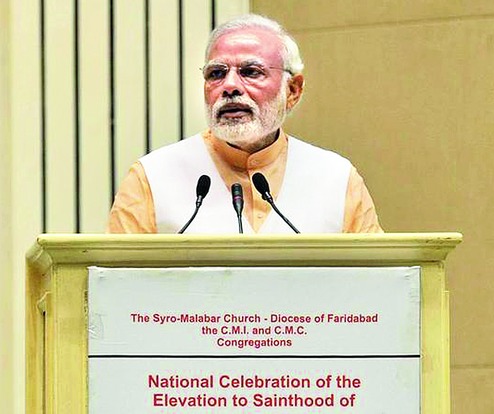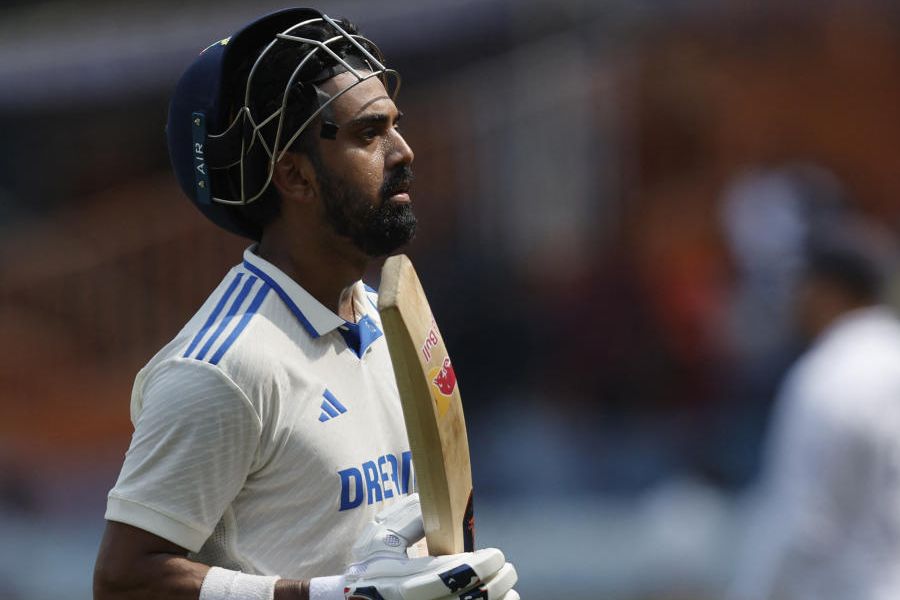
In 1982, Scyld Berry published his first book, Cricket Wallah, an account of the England cricket team's tour of India the previous winter. "Cricket in India should soon become the most popular sport in any country in the world," he wrote. Although "the game grew up thousands of miles away", he continued, "India is destined to become the capital of cricket".
This was astonishingly prescient, as well as precocious. Berry was then still in his twenties. India had not yet won the World Cup. There was but one television channel in the country, and that controlled by the State.
Our successful hosting of the Twenty20 World Cup of 2016 provides more proof - if more was still needed -that for good and for bad, India is indeed the capital of world cricket. I have watched some of the matches, episodically, while spending the days reading Scyld Berry's most recent book, Cricket: The Game of Life: Every Reason to Celebrate, the distillation of a lifetime's learning from watching, reading about, writing on, and occasionally playing the sport.
Berry was born and raised in Sheffield, where he grew up watching the great Yorkshire side of the 1960s, Trueman, Boycott, Illingworth, Close, Binks, Sharpe et al. The ground at Bramall Lane was where the young Scyld was "most alive", the crowd's "hum... the hum of my universe".
Scyld Berry's mother died when he was a young teenager. His father remarried, and sent the son to a boarding school, where cricket became an "emotional surrogate". He never made the school's first eleven, on the rebound studying Arabic at Cambridge, before coming home to cricket by writing about it. For many years now, Berry has been one of the game's most respected writers, most recently as the chief cricket correspondent of the Daily Telegraph (he is also a former editor of the Wisden Cricketers' Almanack).
After a brief autobiographical introduction, Cricket: The Game of Life begins with the first cricket match for which tickets were issued, Kent versus All England in June 1744. There is a brilliant portrait of the first cricketing entrepreneur, an innkeeper named George Smith, who charged two pence for entry, attracting 10,000 spectators and thus making a killing. A little later follows an equally lovely cameo of Lascelles Hall, the Shivaji Park of Yorkshire cricket, which in the late 19th century regularly provided the county with half its team. Where other Yorkshire settlements depended on mining or factory labour, Lascelles Hall was a village of weavers, who could choose their own working as well as playing hours, and whose profession, by developing their wrists and eyesight, helped them in their passion too.
Berry devotes chapters to three countries other than England. He explores how success at cricket consolidated Australia's national identity, how it inculcated a sense of pride among black and coloured West Indians, and how the Parsis, religious exiles from Iran, pioneered the game in India. What stands out here is the rich use of newspaper reports, used to reconstruct important or epochal matches in the cricketing history of these nations. To these skilful recreations of matches played before he was born, Berry adds close descriptions of matches he himself watched, none better than his account of how four fearsome fast bowlers destroyed Gower, Gooch, Botham and company in a Test in Kingston in 1986.
Neville Cardus once wrote that "the scoreboard is an ass". John Arlott professed to be "interested in greatness, not in damn dots". Berry has a real feel for literature and aesthetics; one of the best sections in the book analyses memorable cricketing photographs. Yet he knows that facts and figures, charts and graphs, are important in assessing sporting greatness too. Numbers "go a long way towards grounding the cricketer in reality", he notes: if, in understanding what happened in a particular match, you had to choose between 30 words and 30 numbers, "you would discover a lot more from thirty numbers".
Berry's own research into numbers reveals some interesting results. We learn that, in the history of first-class cricket, more batsmen have been dismissed when their score was 13 than when it was nine, 10, 11, 12 or 14; so perhaps there is some reason for considering the number 13 unlucky. He tells us that in families where more than one member has played Test cricket, sons tend to do better than fathers, younger brothers better than elder siblings. And we learn that in a staggering 47 per cent of the Tests played by the West Indies, the wicket-keeper was a former pupil of Woolmer's High School in Kingston. This is how he describes the school's style of nurturing: "A former player, after playing Test cricket, would return to the school, watch matches played by the new generation and advise a wicketkeeper who was talented."
Berry also provides us striking verdicts of cricketers he has interviewed. The great Len Hutton once told him that "in Australia the ball is harder, and the pitches are harder". Hutton added: "And the people are harder too." To this we can further add a remark of Berry himself: "The Australian cricketer's attitude to touring teams is a bit like a boxer's: he holds his opponent close with one hand while slugging him with the other."
I warmed to Cricket: The Game of Life because of its fine prose and its impressive research, but also because it confirmed my own prejudices. "In every Test-playing country," writes Berry, "the top batsmen are celebrated, but even more so in India. Merchant and Hazare, then Sunil Gavaskar in the 1970s, paved the way for the mass adulation of V.V.S. Laxman, Sourav Ganguly, Rahul Dravid and, above all, Sachin Tendulkar".
A little later, Berry describes Zaheer Khan as "the single most important player" in India's rise to the top of the Test rankings in 2010. I would have had Anil Kumble share this honour with Zaheer - between 1993 and 2008, the Karnataka wrist-spinner won more Test matches for India than Sachin Tendulkar. And yet bowlers remain the under-appreciated underclass of the game. In England, "the big money - from sponsorships, benefit matches, books, newspaper contracts and endorsements - has traditionally gone to batsmen", and so, depressingly, it is in India too.
Berry demonstrates that the very language of cricket is privileged in favour of batsmen. It presents the batsman as an underdog, battling for survival, who is "positive, even creative, in the most arduous circumstances". On the other hand, the language to describe bowlers is, at best negative, and at worst, pejorative.
A batsman makes and consolidates, a bowler breaks and destroys. The adjectives commonly used to describe a batsman or innings are 'brave', 'heroic', 'courageous', 'graceful', 'majestic', and the like. Berry here assembles a whole host of adjectives "used to describe an effective pace bowler, not a single one complimentary: hostile/nasty/destructive/dangeroushreatening/mean/menacing/vicious/explosive". These epithets, remarks Berry, "have connotations of such immoral and violent aggression that the pace bowler, as he wreaks havoc and mayhem, is no better than Genghis Khan".
A second prejudice I share with Scyld Berry is that we both consider Test matches the best form of cricket. Watching a team take the field, he says, is to see "a white waterfall flowing down the pavilion steps". He likes his cricketers to be dressed in white, since "white suggests purity". Berry merely suspects what we subcontinentals know, namely, that "more match-fixing and spot-fixing have been perpetrated in coloured uniform, in limited-overs cricket, than when the clothing has been white".
Cricket has changed a great deal. Batsmen have invented new strokes, bowlers new deliveries. The inside-out shot over cover, the reverse-sweep, the doosra and the carrom ball are all products of the last three decades. The size of the audience has massively increased too. But in one respect cricket is reduced; as Berry points out, "it is a less beautiful game that it used to be". A T20 game is a blur of fours and sixes, power and instinct over skill and subtlety. A match of 50 overs per side allows for more innovation on part of bowler and batsman, but it is only in the longest, most traditional form that all the cricketing arts are on full and extended display. Thus Berry's prescription, which I naturally endorse: "Preserve the Test match and cricket will carry on creating novel possibilities."
Cricket: The Game of Life juxtaposes memories with social history, analyses of cricketing technique with fine-grained accounts of particular matches. It is one of the best books on cricket that I have read in many years, and certainly the most wide-ranging. Cricket lovers who have not yet seen or read it should order the book after the T20 World Cup is over. It shall provide the perfect digestif once this tamasha is done, or perhaps the perfect apertif before the next one begins.
ramachandraguha@yahoo.in











